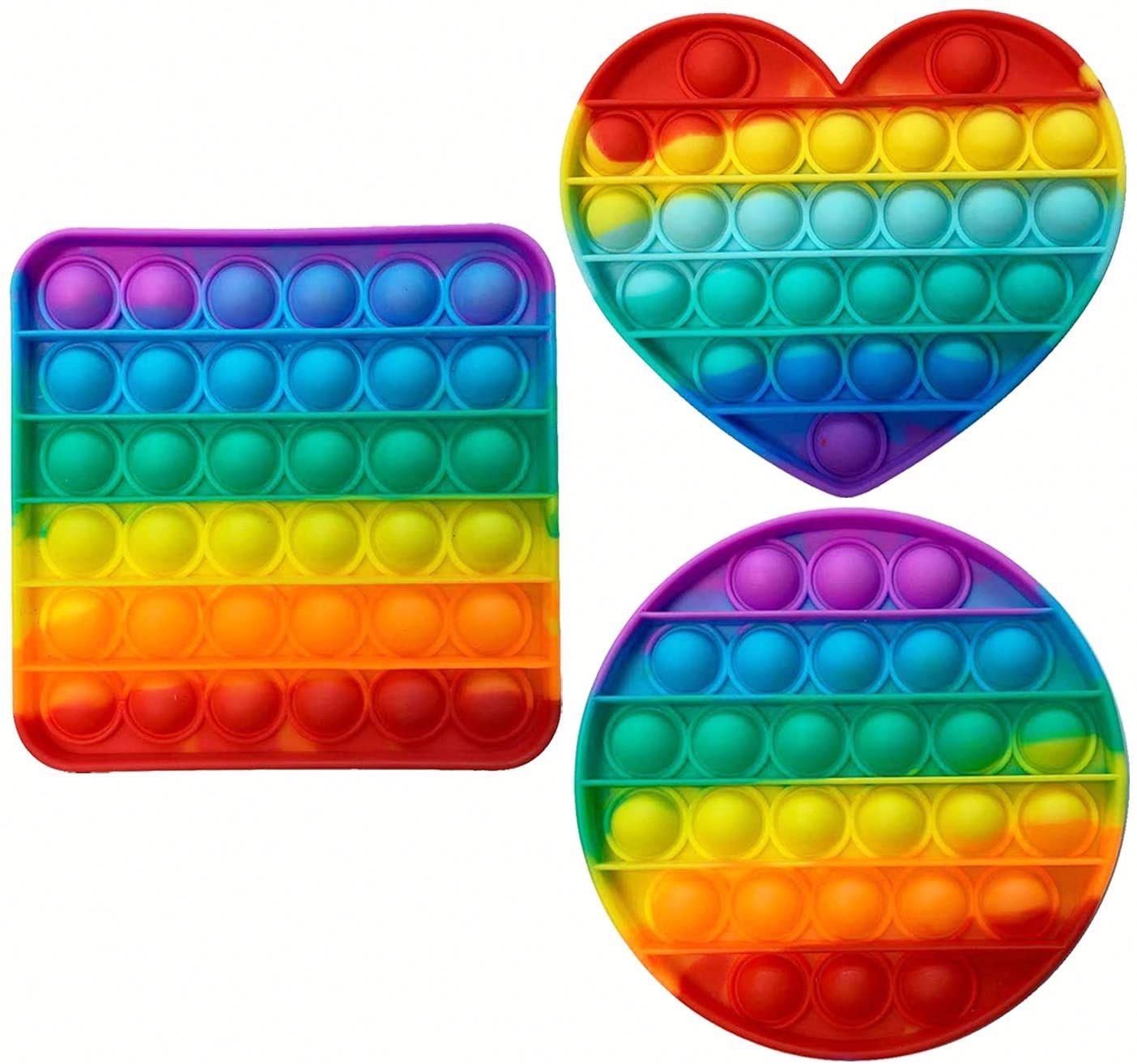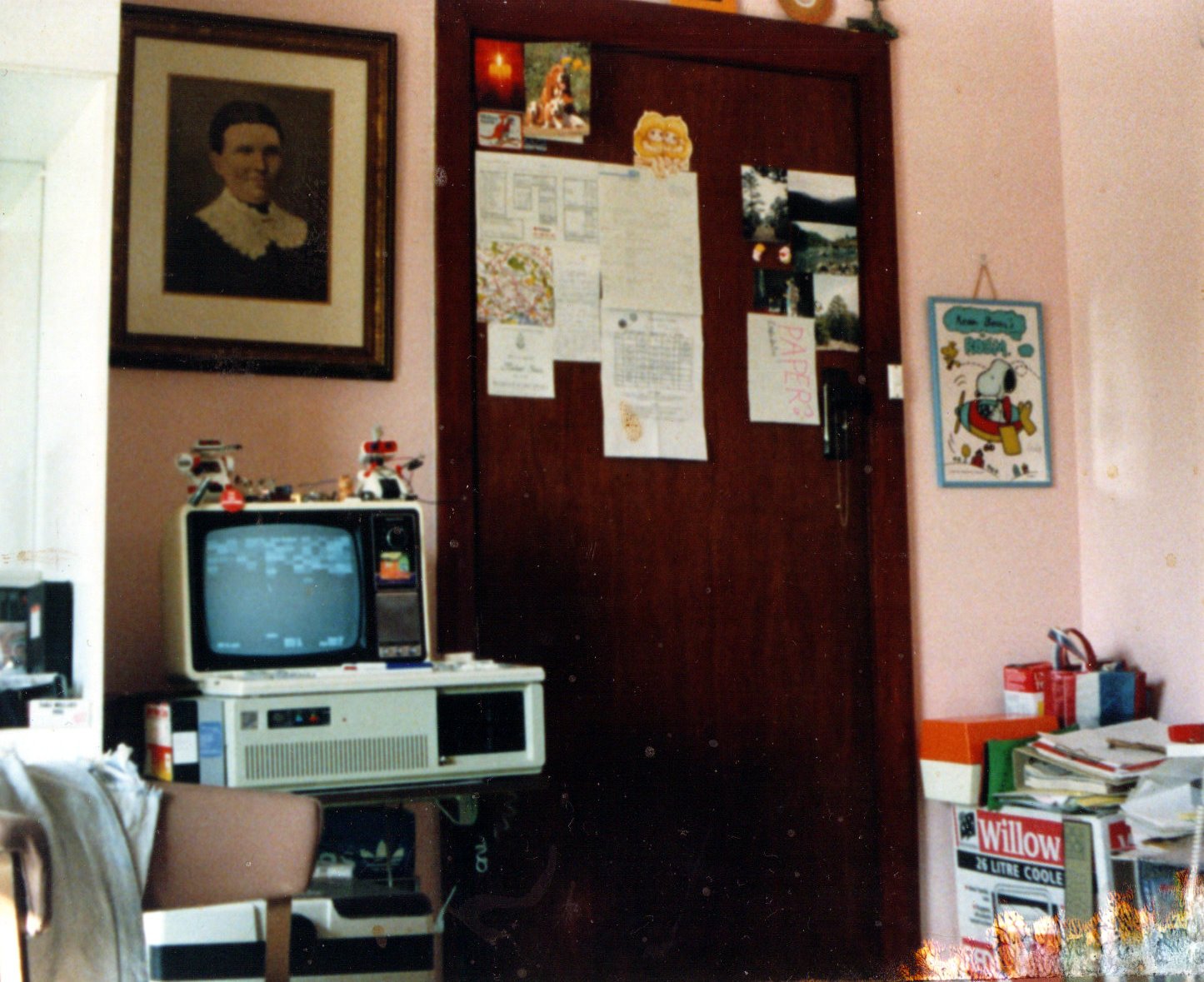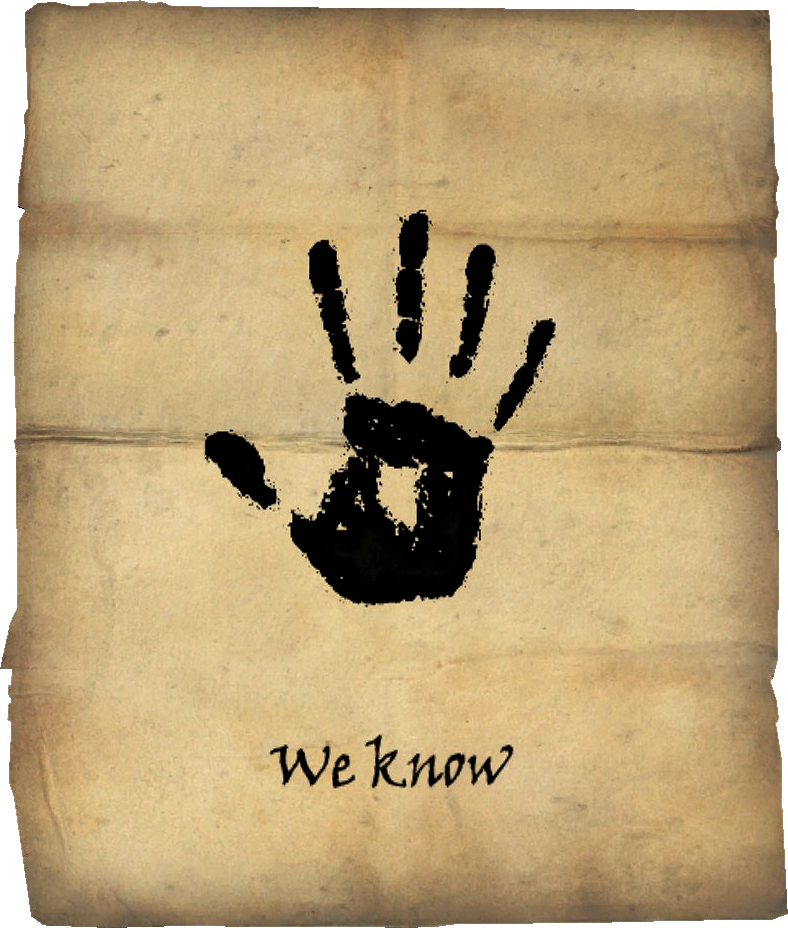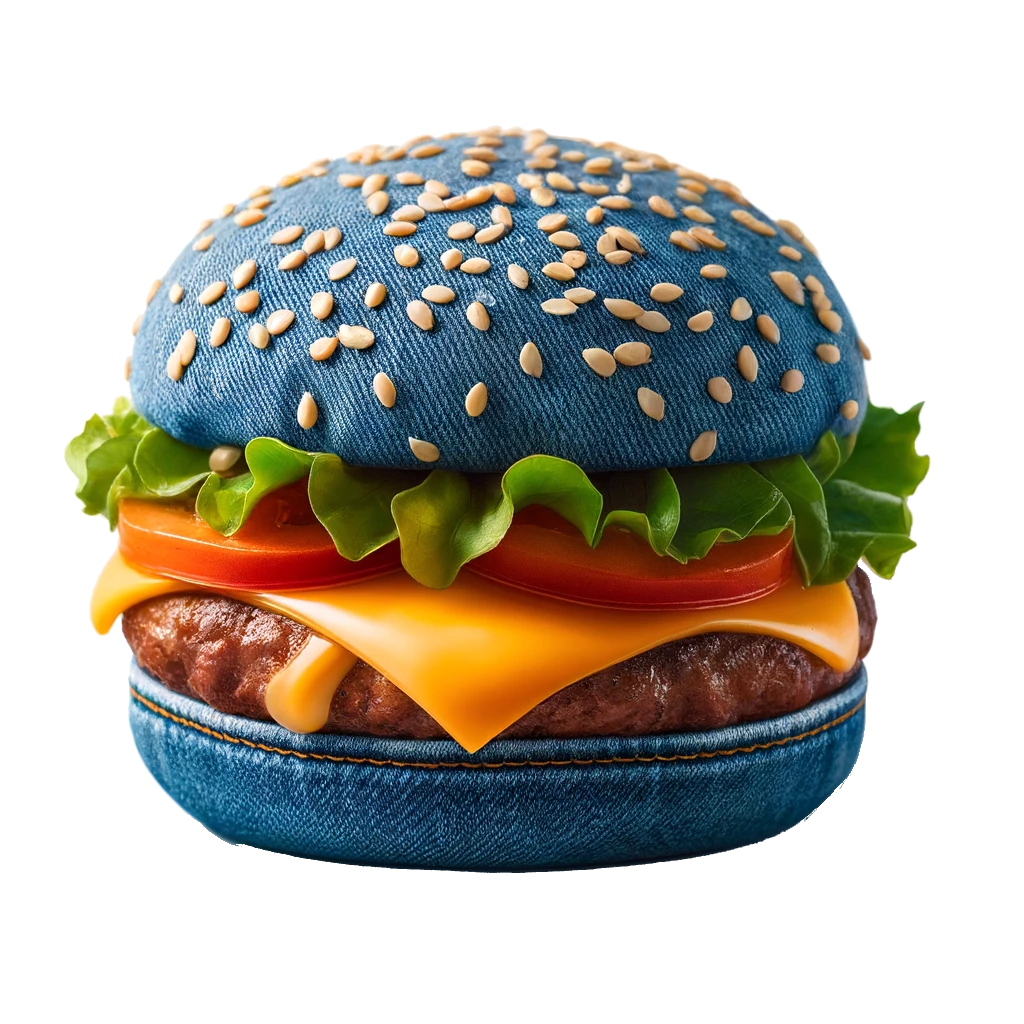Seagate. The company that sold me an HDD which broke down two days after the warranty expired.
No thanks.
laughing in Western Digital HDD running for about 10 years nowHad the same experience and opinion for years, they do fine on Backblaze’s drive stats but don’t know that I’ll ever super trust them just 'cus.
That said, the current home server has a mix of drives from different manufacturers including seagate to hopefully mitigate the chances that more than one fails at a time.
I had the opposite experience. My Seagates have been running for over a decade now. The one time I went with Western Digital, both drives crapped out in a few years.
Did you buy consumer Barracuda?
I currently have an 8 year old Seagate external 4TB drive. Should I be concerned?
Funny because I have a box of Seagate consumer drives recovered from systems going to recycling that just won’t quit. And my experience with WD drives is the same as your experience with Seagate.
Edit: now that I think about it, my WD experience is from many years ago. But the Seagate drives I have are not new either.
Survivorship bias. Obviously the ones that survived their users long enough to go to recycling would last longer than those that crap out right away and need to be replaced before the end of the life of the whole system.
I mean, obviously the whole thing is biased, if objective stats state that neither is particularly more prone to failure than the other, it’s just people who used a different brand once and had it fail. Which happens sometimes.
Heck yeah.
Always a fan of more storage. Speed isn’t everything!
HP servers have more fans!
Good. However, 2 x 16TB Seagate HDDs still cheaper, isn’t it?
These drives aren’t for people who care how much they cost, they’re for people who have a server with 16 drive bays and need to double the amount of storage they had in them.
(Enterprise gear is neat: it doesn’t matter what it costs, someone will pay whatever you ask because someone somewhere desperately needs to replace 16tb drives with 32tb ones.)
Great, can’t wait to afford one in 2050.
Fleebay? Yup, me too!
How many platters?!
30 to 32 platters. You can write a file on the edge and watch it as it speeds back to the future!
Everybody taking shit about Seagate here. Meanwhile I’ve never had a hard drive die on me. Eventually the capacity just became too little to keep around and I got bigger ones.
Oldest I’m using right now is a decade old, Seagate. Actually, all the HDDs are Seagate. The SSDs are Samsung. Granted, my OS is on an SSD, as well as my most used things, so the HDDs don’t actually get hit all that much.
I had 3 drives from seagate (including 1 enterprise) that died or got file-corruption issues when I gave up and switched to SSDs entirely…
I’ve had a Samsung SSD die on me, I’ve had many WD drives die on me (also the last drive I’ve had die was a WD drive), I’ve had many Seagate drives die on me.
Buy enough drives, have them for a long enough time, and they will die.
Yeah, same. I switched to seagate after 3 WD drives failed in less then 3 years. Never had problems since.
Seagate had some bad luck with their 3TB drives about 15 years ago now if memory serves me correctly.
Since then Western Digital (the only other remaining HDD manufacturer) pulled some shenanigans with not correctly labeling different technologies in use on their NAS drives that directly impacted their practicality and performance in NAS applications (the performance issues were particularly agregious when used in a zfs pool)
So basically pick your poison. Hard to predict which of the duopoly will do something unworthy of trusting your data upon, so uh…check your backups I guess?
Had good impressions and experiences with Toshiba drives. Chugged along quiet nicely.
Ah I thought I had remembered their hard drive division being aquired but I was wrong! Per Wikipedia:
At least 218 companies have manufactured hard disk drives (HDDs) since 1956. Most of that industry has vanished through bankruptcy or mergers and acquisitions. None of the first several entrants (including IBM, who invented the HDD) continue in the industry today. Only three manufacturers have survived—Seagate, Toshiba and Western Digital
That decade old one is 3TB. 😅
Unfortunately, I have about 10 dead 3TB drives sitting around in my closet. I took the sacrifice so you don’t have to :-)
at least you have a bunch of nice coasters and cool magnets now.
Thanks. 👍
It never ceases to amaze me how far we can still take a piece of technology that was invented in the 50s.
That’s like developing punch cards to the point where the holes are microscopic and can also store terabytes of data. It’s almost Steampunk-y.
Talking about steam, steam-powered things are 2 thousand years old at least and we still use the technology when we crack atoms to make energy.
This isn’t unique to computing.
Just about all of the products and technology we see are the results of generations of innovations and improvements.
Look at the automobile, for example. It’s really shaped my view of the significance of new industries; we could be stuck with them for the rest of human history.
That’s how most technology is:
- combustion engines - early 1900s, earlier if you count steam engines
- missiles - 13th century China, gunpowder was much earlier
- wind energy - windmills appeared in the 9th century, potentially as early as the 4th
Almost everything we have today is due to incremental improvements from something much older.
Solid state is kinda like a microscopic punch card.
More like microscopic fidget bubble poppers.

When the computer wants a bit to be a 1, it pops it down. When it wants it to be a 0, it pops it up.
If it were like a punch card, it couldn’t be rewritten as writing to it would permanently damage the disc. A CD-RW is basically a microscopic punch card though, because the laser actually burns away material to write the data to the CD.
They work through electron tunneling through a semiconductor, so something does go through them like an old punch card reader
Current ones also store multiple charge levels per cell, so they’re no longer one bit each. They have multiple levels of “punch” for what used to just be one bit.
So are optical discs
Much more so than solid state.
Lmao the HDD in the first machine I built in the mid 90s was 1.2GB
I had a 20mb hard drive
I had a 1gb hard drive that weighed like 20 kgs, some 40 odd pounds
My dad had a 286 with a 40MB hard drive in it. When it spun up it sounded like a plane taking off. A few years later he had a 486 and got a 2gb Seagate hard drive. It was an unimaginable amount of space at the time.
The computer industry in the 90s (and presumably the 80s, I just don’t remember it) we’re wild. Hardware would be completely obsolete every other year.
It really was doubling in speed about every 18 months.
My 286er had 2MB RAM and no hard drive, just two 5.25" floppy drives. One to boot the OS from, the other for storage and software.
I upgrade it to 4 MB RAM and bought a 20 MB hard drive, moved EVERY piece of software I had onto it, and it was like 20% full. I sincerely thought that should last forever.
Today I casually send my wife a 10 sec video from the supermarket to choose which yoghurt she wants and that takes up about 25 MB.
I had 128KB of RAM and I loaded my games from tape. And most of those only used 48KB of it.
Yeah we still had an old 8086 with tape drive and all from my dad’s university times around, but I never acutely used that one.
Back then that was very impressive!
Yup. My grandpa had 10 MB in his DOS machine back then.
30/32 = 0.938
That’s less than a single terabyte. I have a microSD card bigger than that!
;)
Can’t even put it into simplest form.
Now now, no self-shaming about the size of your card. It’s how you use it!
Some IOT perverts are into microSD
I can’t wait for datacenters to decommission these so I can actually afford an array of them on the second-hand market.
Home Petabyte Project here I come (in like 3-5 years 😅)
better start preparing with a 10G network!
Way ahead of you… I have a Brocade ICX6650 waiting to be racked up once I’m not limited to just the single 15A circuit my rack runs off of currently 😅
Hopefully 40G interconnect between it and the main switch everything using now will be enough for the storage nodes and the storage network/VLAN.
Exactly, my nas is currently made up of decommissioned 18tb exos. Great deal and I can usually still get them rma’d the handful of times they fail
Where is a good place to search for decommissioned ones?
Serverpartdeals has done me well, drives often come new enough that they still have a decent amount of manufacturers warranty remaining (exos is 5yr) and depending on the drive you buy from them spd will rma a drive for 5 years from purchase (but not always, depends on the listing, read the fine print).
I have gotten 2 bad drives from them out of 18 over 5 years or so. Both bad drives were found almost immediately with basic maintenance steps prior to adding to the array (zeroing out the drives, badblocks) and both were rma’d by seagate within 3-5 days because they were still within the mfr warranty.
If you’re running a gigantic raid array like me (288tb and counting!) it would be wise to recognize that rotational hard drives are doomed and you need a robust backup solution that can handle gigantic amounts of data long term. I have a tape drive for that because I got it cheap at an electronics recycler sold as not working (thankfully it was an easy fix) but this is typically a super expensive route. If you only have like 20tb then you can look into stuff like cloud services, bluray, redundant hard drive, etc. or do like I did in the beginning and just accept that your pirated anime collection might go poof one day lol
What kind of tape drive are you using? My array isn’t as large as yours (120tb physical), but it’s big enough that my only real options for backup are tape or a whole secondary array for just backup.
Based on what I’ve seen, my options are a prohibitively large number tapes with an older LTO standard or prohibitively expensive tapes with a newer LTO standard.
My current backup strategy consists of automated backups to Backblaze B2 for the really important stuff like personal documents or projects and hoping my ZFS array doesn’t fail for everything else.
I have an ibm qualstar lto8 drive. I got it because I gambled, it was cheap because it was throwing an error (I forget what the number was) but it was one that indicates an issue in the tape path. I was able to get the price to $150 because I was buying some other stuff and because ultimately if the head was toast it was basically useless. But I got lucky and cleaning the head and tape path brought it back to life. Dunno how long it will last. I’ll live with it though because buying one that’s confirmed working can be thousands
You’re right that lto8 tapes are pricey but they’re quite a bit cheaper than building an equivalent array for backup that is significantly more reliable long term. A tape is about 12tb and $40-50, although sometimes they pop up cheaper. I generally don’t back up stuff continually with this method, I back up newer files that haven’t been synced to tape once every six weeks or so. It’s also something that you can buy a bit at a time to soften the financial blow of course. Maybe if you get a fancy carousel drive you’d want to fill it up but frankly that just seems like it would break much easier
More modern tapes have support for ltfs and I can basically use it like an external hard drive that way. So it’s pretty much I pop a tape in, once a week or so I sync new files to said tape, then as it gets full I swap it for a new tape. Towards the end I print a directory of what’s on it because admittedly doing it this way is messy. But my intention with this is to back up my “medium critical” files. Stuff that if I lost I would be frustrated over, but not heartbroken. Movies and TV shows that I did custom muxes of to have my ideal subtitles, audio tracks, etc. all my dockers so stuff like my Jellyfin watch status and komga library stay intact, stuff like that. That takes up the bulk of my nas and my primary concerns are either the array fully failing or significant bit rot, and if either of those occur I would rebuild from scratch and just copy all the tapes back over anyway so the messy filing isn’t really a huge issue.
I also do sometimes make it a point to copy harder to find files onto at least 2 tapes on the outside chance a tape goes bad. It’s unlikely given I only buy new tapes and store them properly (I even go to the effort to store them offsite just in case my house burns down) but you never know I suppose
The advertised values of tape capacity is crap for this use. You’ll see like lto 8 has a native capacity of 12tb but a compressed capacity of 30tb per disk! And the disks will frequently just say 30tb on them. That’s nonsense here. Maybe for a more typical server environment where they’re storing databases and text files and shit but compressed movies and music? Not so much. I get some advantage because I keep most of my stuff in archival quality (remux/flac/etc) but even then I still usually dont get anywhere near 30tb
It’s pretty slow. Not the end of the world but just something to keep in mind. Lto8 is supposed to be 360MBps for uncompressed and 750MBps for compressed data but I don’t seem to hit those speeds at all. I’m not really in a rush though and everything verifies fine and works after copying back over so I’m not too worried. But it can take like 10-14 hours to fill a tape. If I ever do have to rebuild the array it will take AGES
For my “absolutely priceless” data I have other more robust backup solutions that are basically the same as yours (literally down to using backblaze, ha).
eBay sellers that have tons of sales and specialize. You can learn to read between the lines and see that decom goods are what they do.
SaveMyServer is a perfect example. Don’t know if they sell drives though.
Nice, where do you get yours?
also curious, buying new is getting too pricey for me
I personally use goharddrive and serverpartdeals on eBay and have had good luck, but I’m always looking for others
Never used goharddrive but can def endorse spd
Avoid these like the plague. I made the mistake of buying 2 16 TB Exos drives a couple years ago and have had to RMA them 3 times already.
Had that issue with the 3tb drives. Bought 4, had to RMA all 4, and then RMA 2 of the replacement drives all within a few months.
The last 2 are still operating 10 years later though. 2 out of 6.
Their 3tb and 16 TB are super trash. I’m running 20tb and 24tb and they’ve been solid… So far
I stopped buying seagates when I had 4 of their 2TB barracuda drives die within 6 months… constantly was RMAing them. Finally got pissed and sold them and bought WD reds, still got 2 of the reds in my Nas Playing hot backups with nearly 8 years of power time.
They seem to be real hit or miss. I also have 2 6TB barracudas that have 70,000 power on hours (8 yrs) that are still going fine.
“Hit or miss” is unfortunately not good enough for consumer electronics.
It means you’re essentially gambling with bad odds so the business you’re giving money to can get away with cutting corners.
Nice, I agree, I’m sure there is an opposite of me, telling their story of a bunch of failed WD drives and having swore them off.
I recently had to send back a Barracuda drive as well. I’m seeing if the Ironwolf drive fares any better.
I have heard good things about their ironwolf drives, but that’s a enterprise solution drive, so hopefully it’s worth it
I have several WDs with almost 15 years of power on time, not a single failure. Whereas my work bought a bunch of Seagates and our cluster was basically halved after less than 2 years. I have no idea how Seagate can suck so much.
About 10 years ago now, at a past employer, had a NAS setup that housed a bunch of medical data…all seagate drives. During my xmas PTO…I was lead on DR…yea fuckers all started failing one after another. Took out 14 drives before the storage team said fuck this pulled it offline and had a new NAS brought in from EMC, was a fun xmas restoring all that shit. Seagate used to be my go to, but it seems like every single interaction I have with them ends in disaster.
I mean, cool and all, but call me when sata or m2 ssds are 10TB for $250, then we’ll talk.
Not sure whether we’ll arrive there the tech is definitely entering the taper-out phase of the sigmoid. Capacity might very well still become cheaper, also 3x cheaper, but don’t, in any way, expect them to simultaneously keep up with write performance that ship has long since sailed. The more bits they’re trying to squeeze into a single cell the slower it’s going to get and the price per cell isn’t going to change much, any more, as silicon has hit a price wall, it’s been a while since the newest, smallest node was also the cheapest.
OTOH how often do you write a terabyte in one go at full tilt.
I don’t think anyone has much issue with our current write speeds, even at dinky old SATA 6/GB levels. At least for bulk media storage. Your OS boot or game loading, whatever, maybe not. I’d be just fine with exactly what we have now, but just pack more chips in there.
Even if you take apart one of the biggest, meanest, most expensive 8TB 2.5" SSD’s the casing is mostly empty inside. There’s no reason they couldn’t just add more chips even at the current density levels other than artificial market segmentation, planned obsolescence, and pigheadedness. It seems the major consumer manufacturers refuse to allow their 2.5" SSD’s to get out of parity with the capacities on offer in the M.2 form factor drives that everyone is hyperfixated on for some reason, and the pricing structure between 8TB and what few greater than 8 models actually are on offer is nowhere near linear even though the manufacturing cost roughly should be.
If people are still willing to use a “full size” 3.5" form factor with ordinary hard drives for bulk storage, can you imagine how much solid state storage you could cram into a casing that size, even with current low-cost commodity chips? It’d be tons. But the only options available are “enterprise solutions” which are apparently priced with the expectation you’ll have a Fortune 500 or government expense account.
It’s bullshit all the way down; there’s nothing new under the sun in that regard.
the M.2 form factor drives that everyone is hyperfixated on for some reason
The reason is transfer speeds. SATA is slow, M.2 is a direct PCIe link. And SSDs can saturate it, at least in bursts. Doubling the capacity of a 2.5" SSD is going to double its price as you need twice as many chips, there’s not really a market for 500 buck SATA SSDs, you’re looking for U.2 / U.3 ones. Yes, they’re quite a bit more expensive per TB but look at the difference in TBW to consumer SSDs.
If you’re a consumer and want a data grave, buy spinning platters. Or even a tape drive. You neither want, nor need, a high-capacity SSD.
Also you can always RAID them up.
For the context of bulk consumer storage (or even SOHO NAS) that’s irrelevant, though, because people are already happily using spinning mechanical 3.5" hard drives for this purpose, and they’re all already SATA. Therefore there’s no logical reason to worry about the physical size or slower write speeds of packing a bunch of flash chips into the same sized enclosure for those particular use cases.
There are reasons a big old SSD would be suitable for this. Silence, reliability, no spin up delay, resistance to outside mechanical forces, etc.
radarr goes brrrrrr
sonarr goes brrrrrr…
barrrr?
…dum tss!
My first HDD had a capacity of 42MB. Still a short way to go until factor 10⁶.
My first one was a Seagate ST-238R. 32 MB of pure storage, baby. For some reason I thought we still needed the two disk drives as well, but I don’t remember why.
“Oh what a mess we weave when we amiss interleave!”
We’d set the interleave to, say, 4:1 (four revolutions to read all data in a track, IIRC), because the hard drive was too fast for the CPU to deal with the data… ha.
My first HD was a 20mb mfm drive :). Be right back, need some “just for men” for my beard (kidding, I’m proud of it).
So was mine, but the controller thought it was 10mb so had to load a device driver to access the full size.
Was fine until a friend defragged it and the driver moved out of the first 10mb. Thereafter had to keep a 360kb 5¼" drive to boot from.
That was in an XT.
Was fine until a friend defragged it and the driver moved out of the first 10mb
Oh noooo 😭
it honestly could have been a 10mb, I don’t even remember. only thing I really do remember is thinking it was interesting how it used the floppy and second cable, and how the sound it made was used in every 90’s and early 2000’s tv and movie show as generic computer noise :)
You have me beat on the XT, mine was a 286, although it did replace an Apple 2e (granted both were aquired several years after they were already considered junk in the 386 era).
I remember the sound. Also, it was on a three wheel table, and the whole thing would shake when defragging.

These things are unreliable, I had 3 seagate HDDs in a row fail on me. Never had an issue with SSDs and never looked back.
Seagate in general are unreliable in my own anecdotal experience. Every Seagate I’ve owned has died in less than five years. I couldn’t give you an estimate on the average failure age of my WD drives because it never happened before they were retired due to obsolescence. It was over a decade regularly though.
HDD is unreliable with all those moving parts and arms and cilinders.
well until you need capacity why not use an SSD. It’s basically mandatory for the operating system drive too
Capacity for what?. There are 4tb SSD m.2 costing $200 bucks cmon…
I would rather not buy so large SSDs. for most stuff the performance advantage is useless while the price is much larger, and my impression is still that such large SSDs have a shorter lifespan (regarding how many writes will it take to break down). recovering data fron a failing HDD is also easier: SSDs just turn read-only or completely fail at one point, in the latter case often even data recovery companies being unable to recover anything, while HDDs will often give signs that a good monitoring software can detect weeks or months before, so that you know to be more cautious with it




















